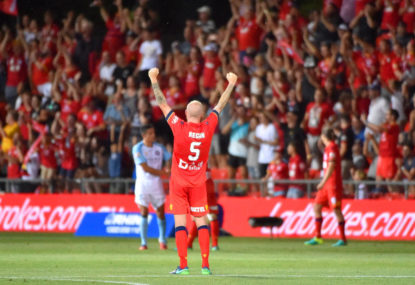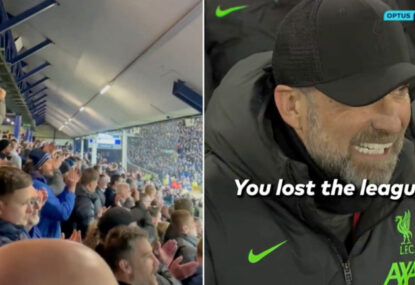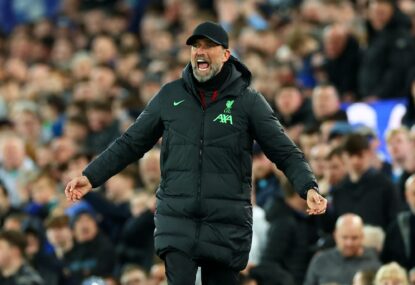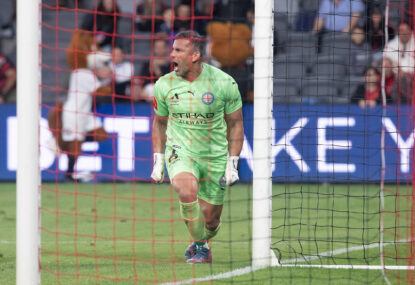The involvement television companies have had with football over the last 20 years has been a double-edged sword.
On one hand, the unprecedented television rights deals have pumped money, hand over fist, into the respective leagues. Innovations in broadcasting have meant the television experience, with all of its new-fangled interactivity, is constantly raising the entertainment ceiling.
On the other hand, the relationship football has had with broadcasters is often argued as being the leading pack-horse, dragging, at a canter, the people’s game away from the people.
Fixture scheduling is now regularly made the slave of the broadcaster, and the fact the country has to pay a significant monthly fee to watch the national league is a state of affairs that, however improper, has become depressingly normal.
Foxtel branding smothers the A-League; some say rightly, while others try and apply a mental censor to it all.
Meanwhile, there appears to be a technologically-fuelled counter-movement occurring at NPL level. NPL Victoria and NPL South Australia recently live-streamed Round 1 matches on Facebook, and have since been proudly pointing to the eye-catching viewing metrics that the streams garnered.
Firstly, let’s address the flaws inherent in the way social media websites calculate video impressions and how they compare with more transparent television ratings.
On Facebook, a user has to watch a video they have scrolled past – without necessarily un-muting the video – for just three seconds for it to count as a “view”. So when South Melbourne chairman Bill Papastergiadis uses the fact that the recently streamed match between his club and Bulleen accrued around 90,000 views as a weapon in his battle for South Melbourne’s acceptance as the next A-League franchise, it doesn’t take long for those initially impressive metrics to wilt, and for those listening to South Melbourne’s chairman to curdle under their own cynicism.
Directly comparing this number to television viewing figures for an A-League game – which Papastergiadis did – is to compare two incongruous sets of numbers, collected in dissimilar ways, designed to be interpreted differently.
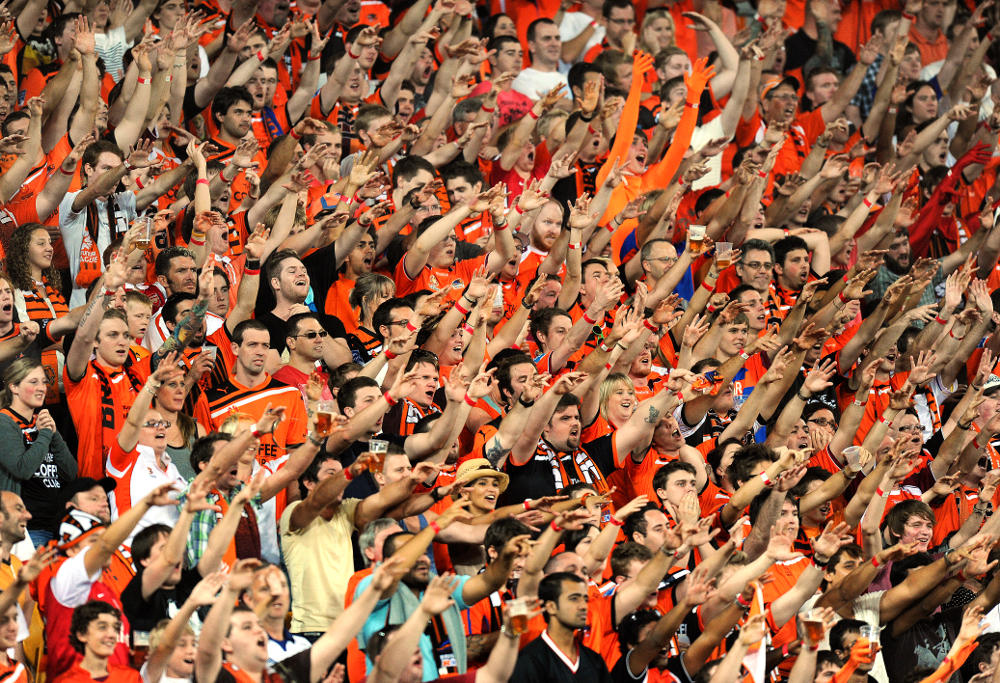
But what this streaming revolution is doing is bringing the lower-levels of Australian football into the pockets and onto the desks of Australians everywhere. This can only be, it must be emphasised, a very good thing for the clubs and for the game generally.
It is also, not to mention, a forward-thinking thing. The way we consume live sport generally has changed; it’s a product that is now offered from a melded media platform. This season, I had to enter into an Optus contract, for a phone I didn’t need, just so I could watch Premier League football on my laptop, a league I had previously received through Foxtel, a television service I was also able to enjoy via their app, which is still installed on the phone I do use.
What a strange circle of electronics that is, and yet, as I have the millennial familiarity to juggle all these devices, I’ve never felt more able to access sport, from anywhere and at any time. Quite often, I used to miss West Ham United’s enthralling draws and defeats, scratched out as they were in the wee hours; now I can enjoy the full chagrin of a final-minute concession with ease, via catch-up, in the morning, from the comfort of my bed.
Regardless of the gaudy “viewing” numbers, or the ways in which club heads will try and misuse them to promote their brands, the fact that football can be accessed as easily on Facebook as Aunt Ruth’s pictures of her newest crocheted masterpiece, can only bolster the sport’s health.
Sporting leagues everywhere are cluing in to how an increased viewership – or, perhaps it might be better labelled, an ‘impressionership’ – can compensate for circumventing the traditional media platforms, either subscription, or those dotted with traditional advertising.
By far the best way to watch the Australian Open is via Channel Seven’s slick and navigable online portal, where almost every match in play can be switched to, regardless of whether it’s being televised on the channel proper.
The NFL have streamed entire games on Twitter, unperturbed by the irony of broadcasting a sport in which a handful of game-clock minutes can easily drag, via stoppages and timeouts, into dozens of real-time minutes, on a site entirely based around restricting the length of communication.
Twitter also showed the Melbourne Cup live, as the world of technology-assisted gambling crunched its way into the heady equation.
There is still a sense of the Old West about all of this, and when people attempt to nail down and assess the spiralling metrics that spew forth from social media, it can feel a little like nailing up some new scrawled diktat to the courthouse noticeboard of a lawless town.
Earlier this month, a Manchester City fan, while attending a non-televised FA Cup match, streamed his view from the stands on Periscope, and drew a live viewing audience ten times that of the actual stadium attendance. As much as the internet seems a place of selfishness and vanity, it is, in fact, filled with altruistic, guerrilla Robin Hoods, freeing sport from the clutches of the swollen media corporations and broadcasting it, at their own risk, to the masses.
The ethics of this are debatable, but it’s hard to argue vigorously in favour of a Murdoch-owned empire.
When illegal streams of A-League games occur every round – on, of all platforms, the most mainstream one, Youtube – it seems as though the FFA, and the league, will eventually be forced to democratise technologically through sheer redundancy alone.
There is an argument to be made – by us, of course, not those who stand to earn a financial boon from restricting access to the product – that, as exposure and growth are what the A-League need more than anything else, that free, public live-streaming of matches is something that should be happening now.
Not too long ago, the only way to see football was from the stands. The romance of that must be preserved, as must the tangible, visceral sensation of leaping up to celebrate a goal with 40,000 other partisans. But the NPL is making productive forays into the new media landscape, and as they turn heads, it’s hard not to be excited.





























































































